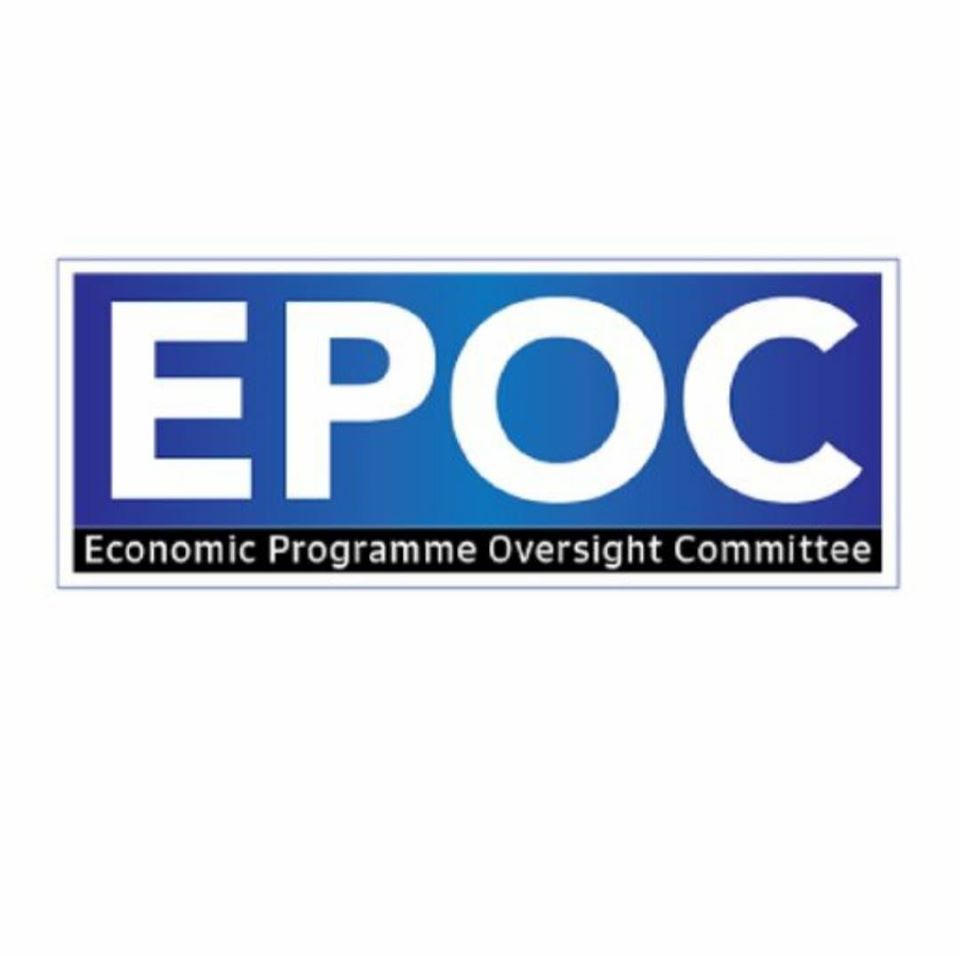
The EPOC met on November 29, 2019 and reviewed the performance of the economy for the period ended September 2019.
IMF Completes 6th and Final review under the Standby Arrangement
The Executive Board of the IMF completed the sixth and final review of Jamaica’s performance under the programme supported by the Stand-By Arrangement (SBA), at the Executive Board meeting held on Monday, November 4, 2019. This follows the sixth IMF review mission under the precautionary SBA, which took place from September 9-20, 2019. The SBA expired on November 10, 2019.
IMF approved Quantitative Performance Targets and Jamaica Priority Actions for FY2019/20 and 2020/21.
The table below shows the results of selected IMF PSBA Quantitative Performance Criteria (QPCs) and Indicative Targets (ITs), and GOJ Economic Reform Programme Targets.
Selected Fiscal and Monetary Indicators
| IMF PSBA and GOJ Economic Reform Programme Targets | Selected IMF PSBA Quantitative Performance Criteria (QPCs) and Indicative Targets (ITs) | Selected Quantitative Performance Targets for GOJ Economic Reform Programme (ERP) | ||
| Actual
(June 2019) |
Target
(June 2019) |
Actual
(September 2019) |
Target
(December 2019) |
|
| Primary Balance of Central Government (J$B) * | 37.9 | 19.0 | 80.7 | 49.6 |
| Tax Revenues (J$B) * | 137.4 | 115.0 | 276.4 | 355.0 |
| Non-Borrowed Reserves (US$M) | 2,587 | 2,202 | 2,720 | 2,390 |
| Inflation (%) ** | 4.2 | 2.5-6.0 | 3.4 | 4.0-6.0 |
* Provisional (Fiscal Year to Date)
** CPI point-to-point movement.
PROGRAMME REVIEW THROUGH SEPTEMBER 2019
FISCAL PERFORMANCE
Selected GOJ Fiscal and Monetary Indicators
| Selected GOJ Fiscal and Monetary Indicators | Actual (Provisional)
(September 2019) |
Budget Target*
(September 2019) |
Actual (Provisional)
(April – September 2019) |
Budget Target*
(April – September 2019) |
| Revenue & Grants (J$B) | 63.3 | 59.1 | 313.9 | 310.4 |
| Tax Revenues (J$B) | 53.6 | 51.3 | 276.4 | 274.5 |
| Recurrent Expenditure (J$B) | 43.4 | 47.5 | 273.0 | 277.2 |
| Capital Expenditure (J$B) | 3.4 | 3.7 | 26.6 | 27.0 |
| Primary Balance (J$B) | 26.4 | 20.9 | 80.7 | 75.0 |
| Actual | ||||
| Non-Borrowed Reserves (NBR) (US$M) (as at October 31, 2019) | 2,813 | |||
| Net International Reserves (NIR) (US$M) (as at October 31, 2019) | 3,172 |
* 1st Supplementary Budget FY2019/20
SELECTED FISCAL INDICATORS
Fiscal and Primary Surpluses exceed April – September 2019 Target
Revenues & Grants
Revenue & Grants of $313.9B for the first six months of the fiscal year (April-September) exceeded the budgeted amount of $310.4B (+1.2%).
Tax Revenues
Tax collections of $276.4B outperformed budget by +$1.9B and were 6.9% or 17.9B ahead of tax revenues for the same period in the last fiscal year.
Expenditures
Expenditure (Recurrent & Capital) for the first six months of the fiscal year was $299.6B (April-September) or $4.7B below budget (-1.5%) but was up by $14.8B (5.2%) over the same period in the previous fiscal year. Of this $299.5B Expenditure, Recurrent Expenditure was $4.2B below budget, while Capital Expenditure came in at $26.6B or $0.5B below budget(-1.8%).
Capital Expenditures are actually $2.0B behind expenditures for the same period for the fiscal year 2018/19. Capital Expenditure which has been lagging behind the budget on a year to date basis, amounted to $3.4b in September 2019 and was $320.8m below the monthly target. The shortfall reflects a slower than anticipated pace of project execution.
Interest Costs
Interest costs for the April to September 2019 period were $66.3B which was $2.6B below the projected $68.9B.
PRIMARY BALANCE EXCEEDS BUDGET TARGET BY $5.6B
As a result of the Revenue and Grants performance for the first six months of the fiscal year, the Primary Balance of $80.7B exceeded the $75.0B budget target for April-September 2019.
FISCAL BALANCE
The fiscal balance for the period April – September 2019 was $14.4B which was $8.3B above the First Supplementary Budget of $6.1B. This positive performance was due to the combined effect of higher than budgeted Revenue and Grants and lower than programmed Expenditure (excluding amortization).
MONETARY TARGETS
International Reserves
As at November 26, 2019, Jamaica’s Net International Reserves stood at US$ 3,119.6 m.
Non-Borrowed Reserves
Non-borrowed Reserves as at October 31, 2019 were $2,813m. For end-December 2019, the Bank of Jamaica (BOJ) projects that the stock of non-borrowed reserves (NBRs) will be US$249.2 million above the target. The targeted floor is US$2,390.0 million.
Gross Reserves decline
BoJ’s gross reserves as at November 26, 2019 declined by US$59m to US$3.598m. This reduction was largely driven by the B-FXITT flash sales operations amounting to US$90m which were conducted due to excess volatility in the FX market.
Inflation
The 12-month point-to-point inflation rate as at October 2019 was 3.3 per cent, below Bank of Jamaica’s target range of 4.0 per cent to 6.0 per cent and lower than the same measure at October 2018 (4.7 per cent).
Core Inflation
Core inflation, measured as the Consumer Price Index excluding the prices of Agricultural Commodities & Fuel (CPIAF), was 2.9 per cent at October 2019, in line with the outturn for September 2019 but higher than the outturn for October 2018.
Short Term Inflation Forecast
Bank of Jamaica estimates the annual point to point inflation rate at November 2019 to be 3.5 per cent.
Foreign Exchange Market
On December 6, 2019, the value of the Jamaican Dollar vis-à-vis the US dollar was J$134.73 = US$1.00, reflecting an appreciation of 0.8per cent ($3.07) for the month to 26 November 2019 (Month To Date). This follows an appreciation of 3.1 per cent ($4.31) for November 2019.
Real Effective Exchange Rate
There was an estimated loss in competitiveness of 0.4 per cent at October 2019, as measured by the change in the annual average Real Effective Exchange Rate (REER), relative to the same measure at October 2018. This loss in competitiveness stemmed from a change in relative prices.
EPOC’S OVERVIEW AND RECENT DEVELOPMENTS
GoJ successfully completed IMF Programme
IMF Sixth and Final Review under the Precautionary Standby Agreement (PSBA)
Programme implementation remained strong under the sixth and final review under the SBA. All quantitative performance criteria (QPCs) and indicative targets (ITs) for end-June 2019 were met. By the expiry of the SBA, all twenty-three (23) structural benchmarks under the SBA have been met as Jamaica successfully completed the IMF Standby Arrangement Programme.
BOJ holds policy rate at 0.5%
On November 19, 2019, the BoJ held the policy rate unchanged at 0.5% based on their continued assessment that “monetary conditions are generally appropriate to support the achievement of the Banks inflation target of 4% to 6%”.
Credit Growth
Credit extended by the Deposit Taking Institutions (DTIs), continued to be buoyant influenced by lower interest rates as reported by the BoJ. Credit extended by the DTIs to businesses and households grew by 15.5% between September 2018 and September 2019.
Merchandise Trade
Statin reported that merchandise Trade for January to August 2019 was US$4.351B, an increase of 8.7% over the same period in 2018. Total Exports of US$1.140B for January to August 2019 decreased by 7.1% when compared to the same period in 2018. This decrease in exports was primarily driven by a 13.7% decrease in traditional exports which were US$686.1m compared to US$794.9m exported in the same period in 2018.
Economic Growth
The preliminary estimates by the Planning Institute of Jamaica (PIOJ) indicate that the economy recorded growth during the second quarter of the fiscal year 2019/20. For July–September 2019, real GDP is estimated to have increased by 0.3% compared with the corresponding quarter of 2018, representing nineteen consecutive quarters of positive growth. Real value added in the Goods-Producing Industry is estimated to have decreased by 2.1% while the Services Industry is estimated to have grown by 1.2% during the quarter.
Noteworthy was the Mining and Quarrying sector which is estimated to have decreased by 18.5% mainly as a result of lower output by Alpart due to the operational closure for 18-24 months.
PIOJ projects that Real GDP is projected to grow in the range of 0% to 1% for October to December 2019 and also 0% to 1% for the Fiscal year 2019/20.
GOJ Commitments 2019-2021
EPOC welcomes and lauds the GOJ for the delivery of the GOJ Quantitative Performance Targets and Priority Actions Matrix for 2019/20 and 2020/2021 that were outlined at the completion of the sixth review. These commitments will form the basis for the monitoring of the GOJ Economic Reform Programme (ERP) following the expiry of the SBA.
EPOC will begin reporting on the Priority Actions Matrix in its next Communique.
EPOC’s OUTLOOK
As Jamaica embarks without the oversight of the IMF, Jamaica’s fiscal performance continues to be strong as Tax Revenues continue to be healthy, growing at higher than inflation levels year over year and continuing to exceed its’ targets.
Jamaica’s Gross reserves continue to exceed the Reserve adequacy metrics, and do provide a buffer against external shocks. The FX market experienced excess volatility due to imbalances in demand and supply in October and November 2019, which saw the BOJ executing flash auctions under B-FXITT of US$140.0m. EPOC is hopeful that the introduction of the FX trading platform and the further development of the FX forward market will bring increased transparency to the market, which could lead to reduced volatility and reduce the need for the sale of US$ through B-FXITT flash auctions as we go forward.
Inflation is low and stable albeit below target, but core inflation has increased in September and October 2019, which could lead to inflation moving back into the target range of 4-6%.
Growth remains fairly low but positive, in spite of the temporary closure of Alpart and unfavourable weather conditions, which impact agricultural output.
Jamaica continues to grapple with supply side challenges in crime and access to finance issues for SMEs and Agriculture. EPOC notes the efforts around developing a national consensus on Crime and the efforts by the Public and Private Sector to address the access to finance impediments.
While the global and regional outlook for growth is skewed to the downside, business and consumer confidence remain high in Jamaica.
While we all would like to see greater inclusive growth, the GOJ and the BOJ by all indications are on a sustainable path which should see Jamaica growth levels increasing to GOJ projected 2% growth levels by 2021/2022.
This information is provided to you monthly by the non-public sector members of EPOC
